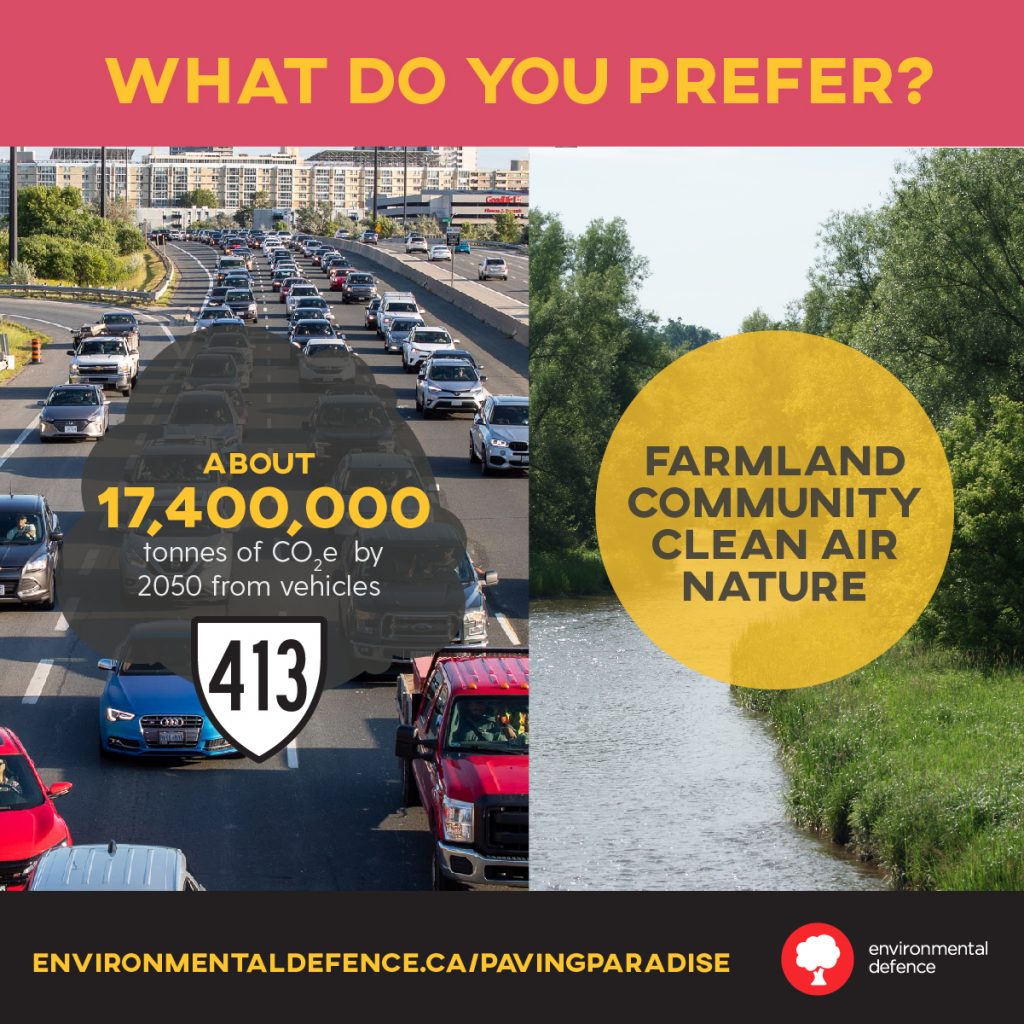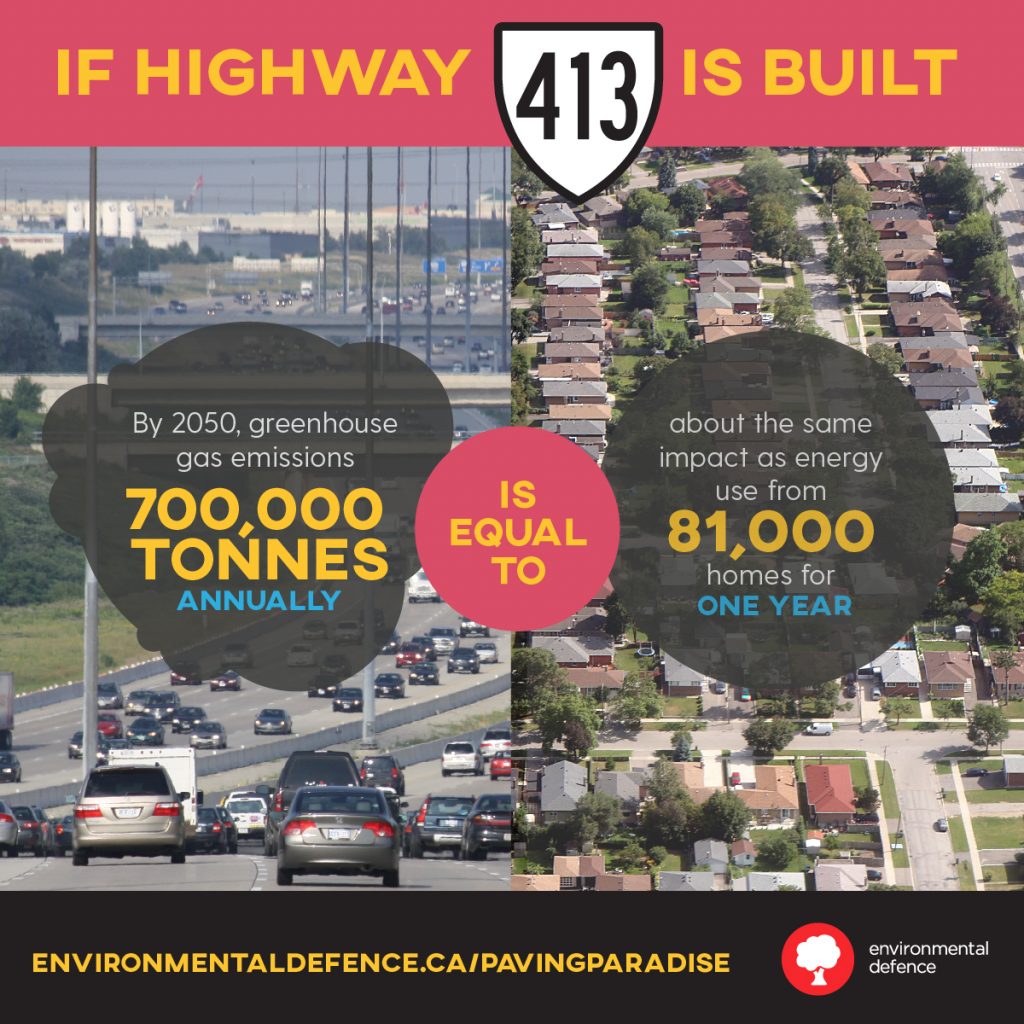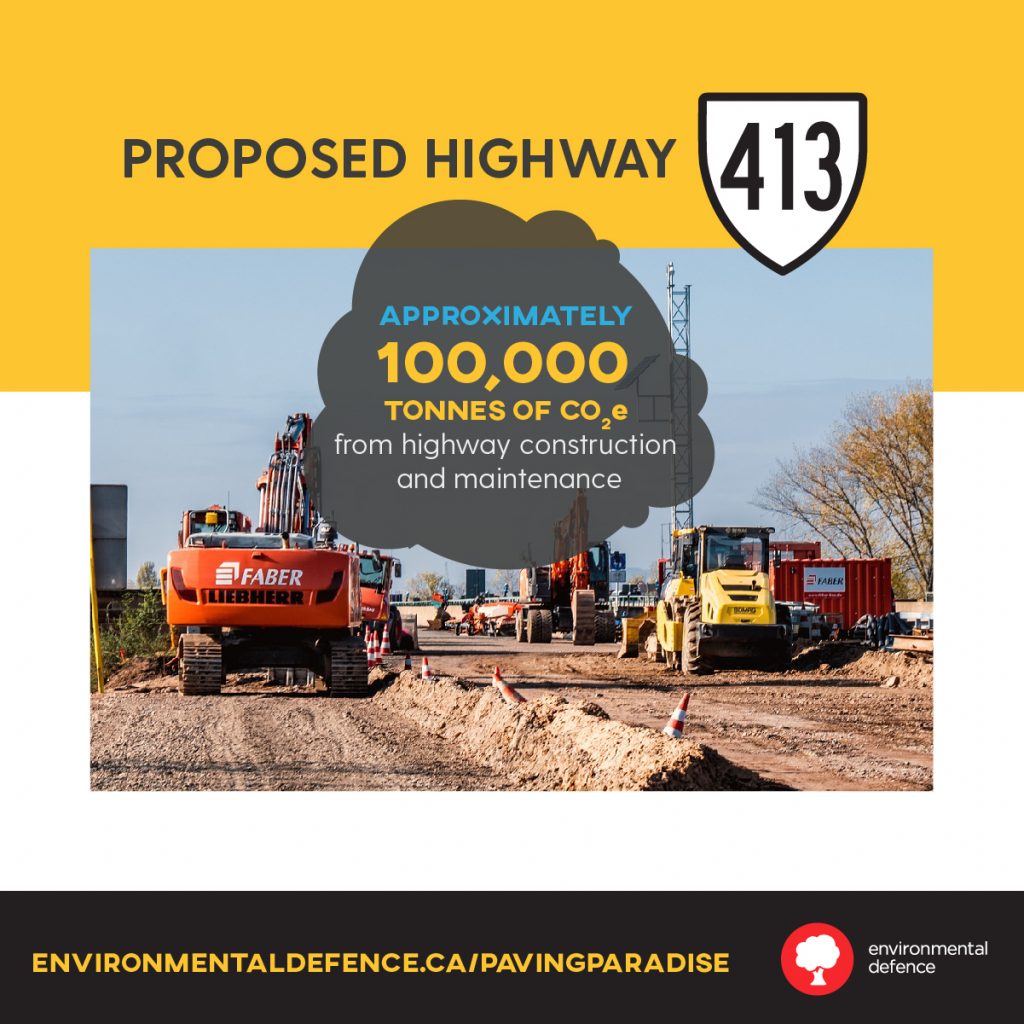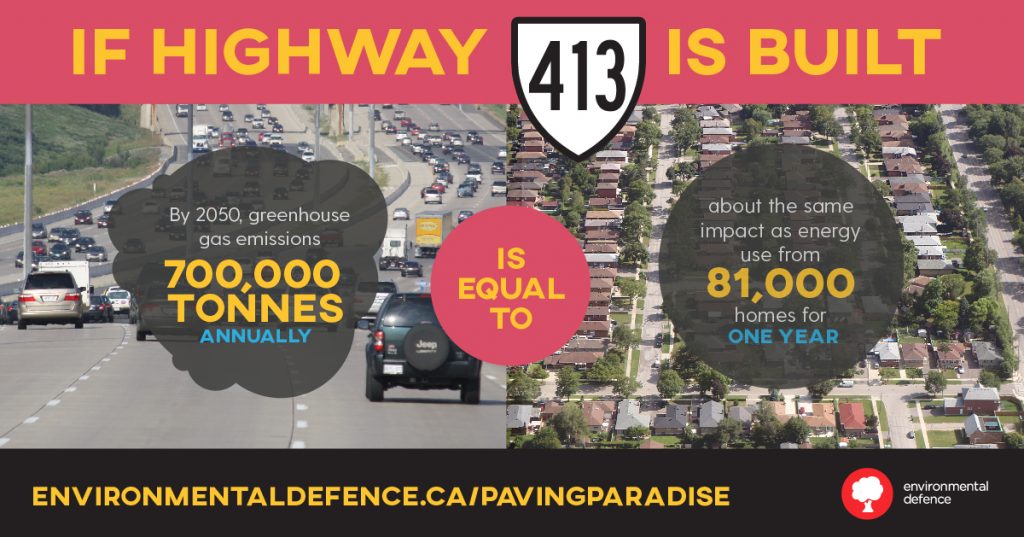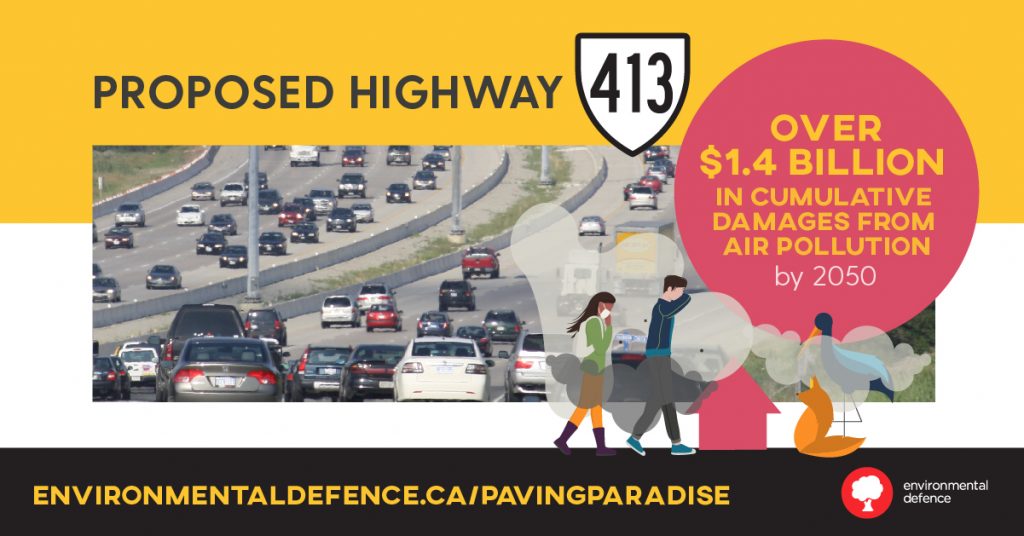
About The Report:
We wanted to get a sense of the impact Highway 413 could have on climate change and air pollution, so we hired a transportation modelling team to add up how much pollution, and how much sprawl Ontarians could be facing if Highway 413 is built.
The evidence shows that by adding hundreds of thousands of polluting cars, SUVs and trucks to Ontario’s roads, Highway 413 will make climate change worse and harm the health of people, communities, and sensitive ecosystems. It also shows how a new highway will help developers build out and not up, abandoning sustainable, dense, vibrant cities for sprawling car-dependent subdivisions that force people to travel even farther to get where they need to go.

Highway 413 Will Increase Ontario’s Greenhouse Gas Emissions
To determine Highway 413’s impact on greenhouse gas emissions we modelled two scenarios: Business-As-Usual, based on the current mix of vehicles on the road and Optimistic Electrification, if we reach federal vehicle electrification targets.
For Business-As-Usual, by 2050, vehicles using Highway 413 will emit over 700,000 tonnes of greenhouse gasses each year for a 30 year total of over 17 million tonnes.
For Optimistic Electrification, by 2050, vehicles using Highway 413 will emit over 350,000 tonnes of greenhouse gasses each year, with emissions over 400,000 tonnes per year until after 2040, for a 30 year total of nearly 13 million tonnes.
Building Highway 413 will increase Ontario’s greenhouse gas emissions and make it difficult to reach the goal of net-zero emissions by 2050.
Take Action: Tell Ontario to cancel Highway 413
Photo by Danielle Scott via Flickr Creative Commons

Highway 413 Will Cause Over $1 Billion in Damages from Air Pollution
Cars and trucks emit more than just greenhouse gas emissions, they also emit nitrogen oxides, black carbon, and other toxic substances which harm our health when we breathe them in.
Building Highway 413 would mean direct health impacts to nearby communities. How close you live to a highway or major road is the biggest risk factor determining how much traffic-related air pollution harms your health. The risk of premature death from respiratory illnesses like asthma or lung cancer skyrockets for people who live within 200 metres of a highway or major road. But studies show the impacts linger for kilometres.
Our modelling shows that Highway 413 could cause between $1 – $1.4 billion dollars in cumulative damages from air pollution by 2050. The amount depends on how much residential growth occurs close to the highway, and whether more action is taken to get more electric vehicles on the road.
Photo by Can Pac Swire via Flickr Creative Commons



Highway 413 Will Lead to Increased Suburban Sprawl
Building out instead of up damages ecosystems, water sources, and farmlands. It also costs cities and towns much more, since water pipes and other infrastructure must be built over longer distances to reach the same number of people.
Highway 413 is a textbook example of how bad transportation planning could supercharge urban sprawl in the GTA West region. To get a sense of its potential for sprawl, we looked at sections of Highway 407 in York and Peel regions. Before the 407 toll highway was built, the surrounding lands were relatively undeveloped, dominated by farmland. Fast forward thirty years and most of the farmland has been converted to suburban sprawl.
Currently there is very little development near the proposed route of Highway 413. Based on Highway 407 and Highway 410, we estimate that up to 60 per cent of the farmland near the highway will be converted to residential and commercial sprawl by 2050.




